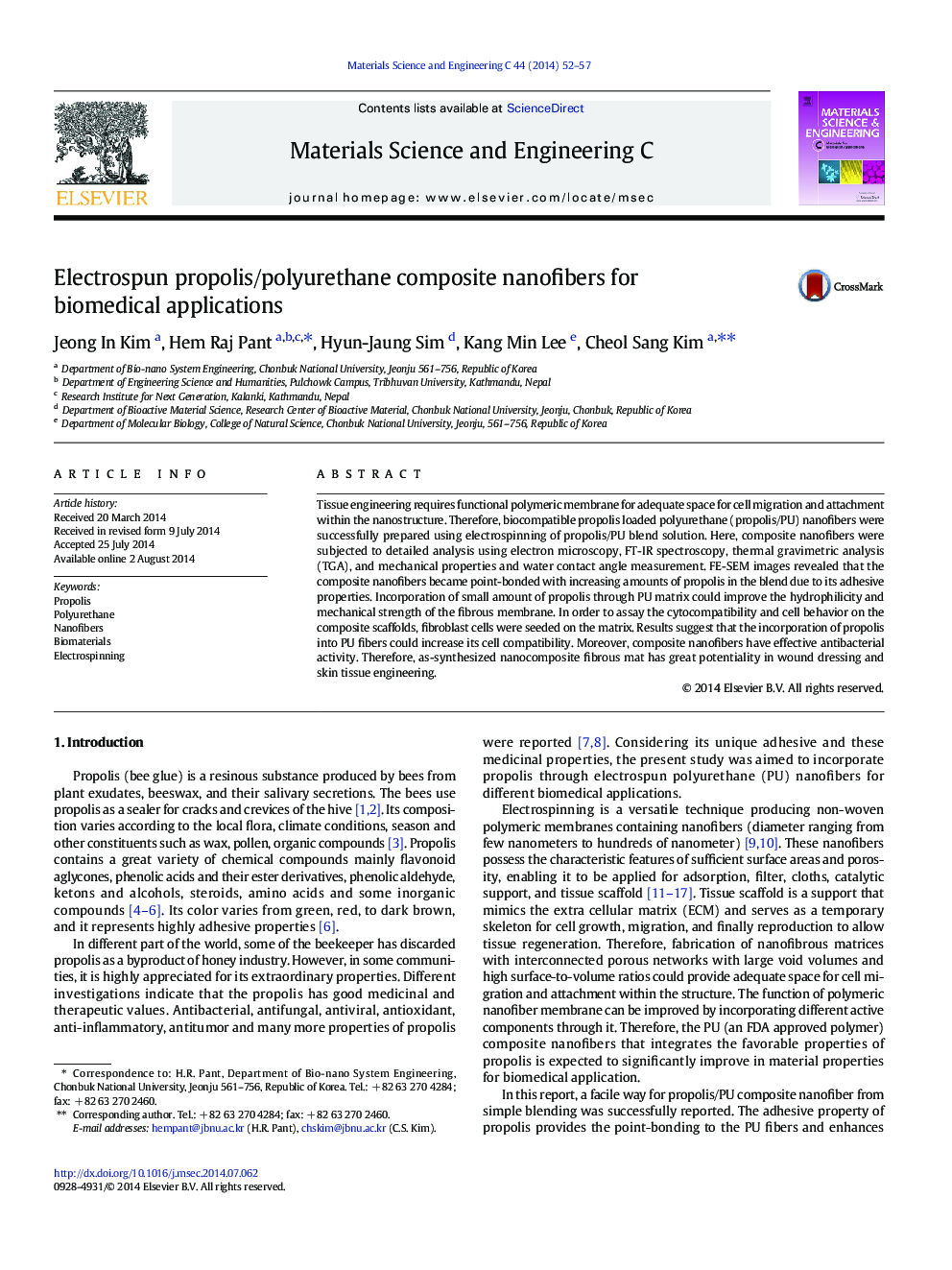| Article ID | Journal | Published Year | Pages | File Type |
|---|---|---|---|---|
| 1428258 | Materials Science and Engineering: C | 2014 | 6 Pages |
•Sufficient amount of propolis is simply loaded through PU fibers.•Propolis increases the hydrophilicity and mechanical properties of PU fibers.•Composite mat shows excellent antibacterial activity.•Small amount of propolis can enhance the cell compatibility of PU fibers.
Tissue engineering requires functional polymeric membrane for adequate space for cell migration and attachment within the nanostructure. Therefore, biocompatible propolis loaded polyurethane (propolis/PU) nanofibers were successfully prepared using electrospinning of propolis/PU blend solution. Here, composite nanofibers were subjected to detailed analysis using electron microscopy, FT-IR spectroscopy, thermal gravimetric analysis (TGA), and mechanical properties and water contact angle measurement. FE-SEM images revealed that the composite nanofibers became point-bonded with increasing amounts of propolis in the blend due to its adhesive properties. Incorporation of small amount of propolis through PU matrix could improve the hydrophilicity and mechanical strength of the fibrous membrane. In order to assay the cytocompatibility and cell behavior on the composite scaffolds, fibroblast cells were seeded on the matrix. Results suggest that the incorporation of propolis into PU fibers could increase its cell compatibility. Moreover, composite nanofibers have effective antibacterial activity. Therefore, as-synthesized nanocomposite fibrous mat has great potentiality in wound dressing and skin tissue engineering.
